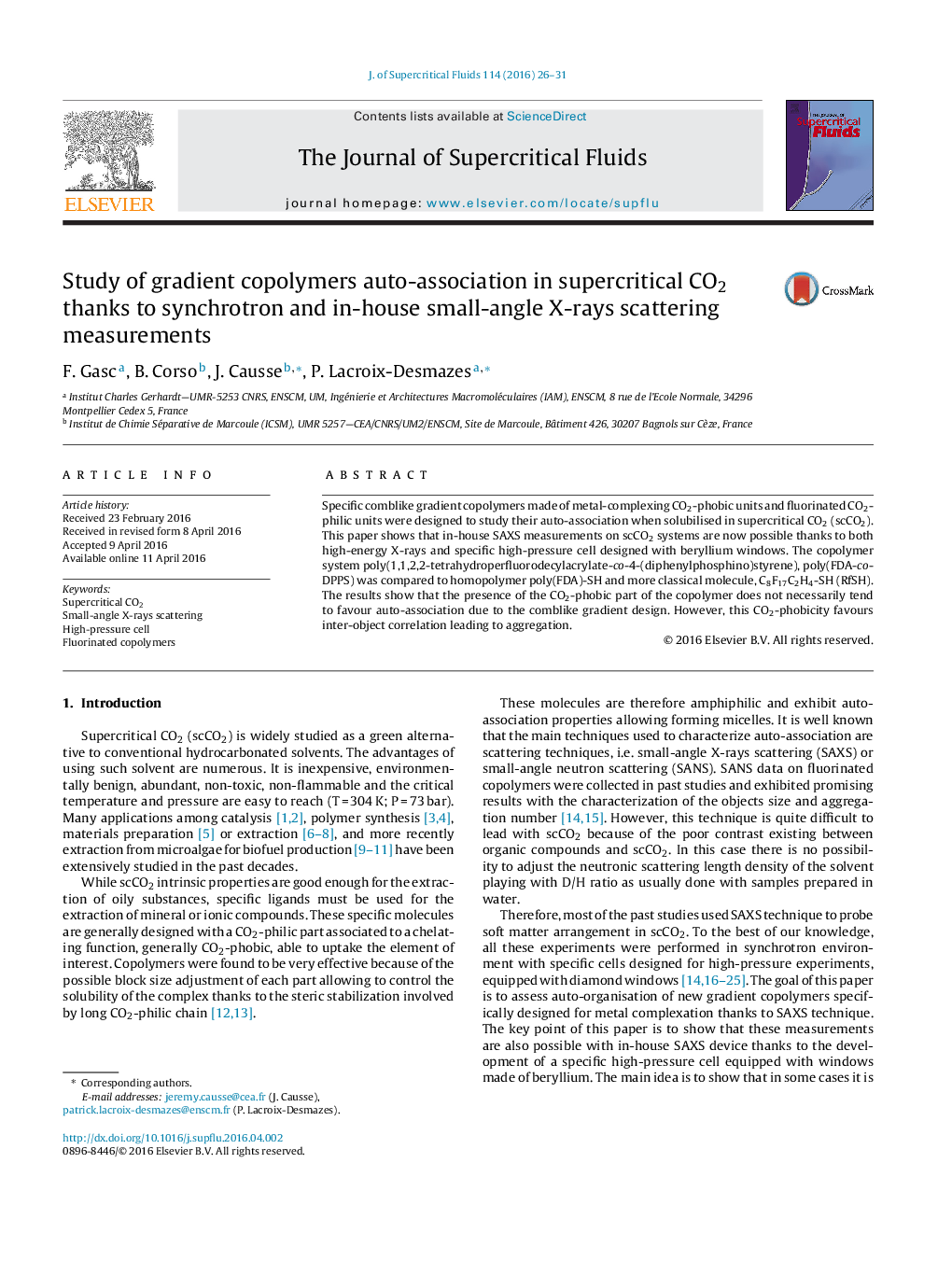| Article ID | Journal | Published Year | Pages | File Type |
|---|---|---|---|---|
| 230047 | The Journal of Supercritical Fluids | 2016 | 6 Pages |
•In-house SAXS measurements are possible thanks to specific HP cell and 17 keV X-rays.•Copolymers with relevance in the field of metal recycling have been studied.•CO2-phobic part of the copolymer tends to favour nano-object aggregation.
Specific comblike gradient copolymers made of metal-complexing CO2-phobic units and fluorinated CO2-philic units were designed to study their auto-association when solubilised in supercritical CO2 (scCO2). This paper shows that in-house SAXS measurements on scCO2 systems are now possible thanks to both high-energy X-rays and specific high-pressure cell designed with beryllium windows. The copolymer system poly(1,1,2,2-tetrahydroperfluorodecylacrylate-co-4-(diphenylphosphino)styrene), poly(FDA-co-DPPS) was compared to homopolymer poly(FDA)-SH and more classical molecule, C8F17C2H4-SH (RfSH). The results show that the presence of the CO2-phobic part of the copolymer does not necessarily tend to favour auto-association due to the comblike gradient design. However, this CO2-phobicity favours inter-object correlation leading to aggregation.
Graphical abstractFigure optionsDownload full-size imageDownload as PowerPoint slide
